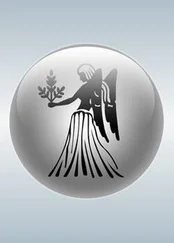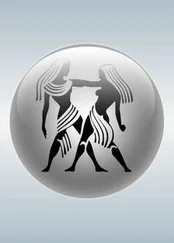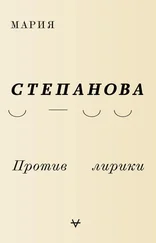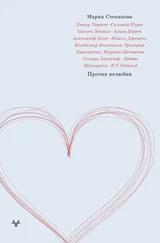*
In Leningrad in 1930 an intriguing book was published with the title How We Write . Well-known authors, from Gorky to Zoshchenko and Andrei Bely (and a certain number of representatives of Communist Party–approved literature, whose thinking was exactly what you might expect) contributed essays about their writing process, how the cogs of idea and execution meshed together. The writers also included the aristocrat Alexei Tolstoy, a man who had returned to the USSR from emigration to occupy the absurd but privileged position of the acceptable aristocrat, The Red Count . His prose is among the most remarkable in this altogether fascinating book.
Tolstoy writes with unambiguous rapture about the texts that became both templates and sources of inspiration for him: seventeenth-century confessions under torture, extracted with the aid of pincers, clubs, and brands, written up by anonymous functionaries, deacons, and servants, in the presence of the victim. Tolstoy admired their ability to get to the heart of the matter, “preserving the particular nature of the torture victim’s speech,” “exact and concise,” so the reader can see and feel the language, its musculature. “…Here I saw the Russian language in all its purity, not spoiled by the dead form of Church Slavonic, nor translated under duress […] into a fake literary language. Here was the language Russians have spoken for a thousand years, but no one ever wrote down.”
Tolstoy’s text is very talented, arranged (with the help of many tiny literary maneuvers) to give his interest the appearance of respectability, something along the lines of an ethically sprung mattress, allowing the author to recoil from the reader’s enjoyment, and avoid falling into the black hole that yawns before the reader as soon as he even begins to concern himself with what is actually happening (and will continue to happen as long as the text lives) to the person whose Russian language you are tasting in your own mouth. Tolstoy’s taste has an invisible subtext. The political trials, exiling, and sentencing hadn’t yet reached their heights in 1930, but just beyond the world of his writing desk, too close for comfort, were the mass roundups by the OGPU, the Shakhty trial, and the recent execution of fellow writer Sillov. Pasternak wrote about the last of these in a letter to his father, saying “I will never be free of the effect of this act.” The Russian “records of proceedings,” as Tolstoy called them, with their sequence of confessions tortured out of the victims over the centuries, were clearly an invaluable source — but what end did they serve?
What Tolstoy doesn’t say is that the attraction of these testimonies, what makes their syntax so lively and the choice of words so exact, lies in their forcedness. They are not the product of free will — they result from pain. The Russian language of the accused and the tortured is the child of a terrible conjoining, quite literally torn from you by another’s hands. It’s without internal compulsion, it isn’t a drawing, but an imprint, the raw (as meat is raw) tracing of events. The words of the victim are without design, they have no interlocutor, and we can be sure that the victim never wanted them to be voiced. It is the most extreme example of what Rancière called the “monument” — a message that is entirely matched to its reason for being and has no desire for a long life, a listener, or even understanding. Speech is tied up, naked, in the last stages of pain and humiliation, on the brink of collapse.
Like everything that is not intended for the inadvertent gaze, the words of an arrested person under interrogation, the words of an informant and of a witness, have a particular direct quality. We see the prohibited , that is, we see what we shouldn’t see under any circumstances, and it blows a shell hole in the mind, like Arlette Farge’s “tear in the fabric of time.” It happens outside the normal way of things, the usual framework, when the gaze settles on an object it wasn’t expecting.
The language of document circulation and court proceeding is a revelation, but not because it lacks literature’s glossy veneer, the desire to “say it well.” It is perhaps more the case that this speech and its subject have no subjunctive mood. They have no past, they’ve already been torn from it; they have no future, you can’t see any future for them. Archival documents exist entirely in the present, and they see nothing more than themselves, their own process , their own result. This is life buttoned up wrongly; these are the ones who will never exist again, dragged out of the darkness into the sudden random light, and then deposited back into darkness.
In Farge’s book about the poetics and the practice of archival work the light is dimmed, as if we are discussing the negotiation of catacombs. She continually describes the darkness and the difficulty of movement; she talks about the density of archives as one might talk about a rock in which we discern different scattered metals. As I read I imagine how the underground life of data congeals into one collective mass over the centuries, similar in form to the body of the earth itself — the thickening mass of millions of lives, freed of their past significance, lying side by side, without a hope of being recognized or seen for themselves.
History, in contrast to the archive with its “overabundance of life,” has a narrow throat: it only has need of one or two examples, two or three enlarged details. The archive returns us to the single unit, the one-off nature of every unfamiliar event. But strange things happen — the general begins to stratify, to decompose into the constituent particles of individual existences; parts of the whole rise like bread dough; the rules pretend to be exceptions. The darkness of the past becomes a stationary screen, made of nearly transparent film that hangs before the eyes continuously, changing the proportions and the relationships between objects. Paul Celan, in his “Conversation in the Mountains,” speaks of this when he writes: “No sooner does an image go in than it catches a web, and right away there’s a thread spinning there, it spins itself around the image, a thread in the veil; spins around the image and spawns a child with it, half image and half veil.”
*
It was a July day. The heat was terrible, the city was filled to the brim with sticky warmth, and I was sitting in a small room in the Kherson State Archive reading the documents of the revolutionary committee. On one of the six tables, which looked more like school desks, was spread the blueprint of a factory of agricultural implements. The factory was enormous, and the blueprint barely fit across the table, with its sheds and outhouses, some of which hung down over the sides — I couldn’t inspect them properly. I had just finished reading the local sanitary health commission report, where I learned that in 1905 “the pink sago from Ioffe’s Stores was discovered to be colored with aniline and one and a half pounds were destroyed” and “in all the shops serving beer a jug of water is used to wash glasses. It is suggested that a tap and supply of water is used instead.” Alongside such hygiene measures were the orders issued to residents to clean and tidy their yards, privies, and dumps. Among the offenders the residents of Potemkin Street: Savuskan, Tikhonov, Spivak, Kotlyarsky, Falts-Fein, Gurevich. Whenever I stumble across my great-grandfather’s surname, especially in such unforeseen and even unfavorable associations, I feel the prick of sudden proximity, as if a pointed instrument had pierced a hole in the text of the report, and my eye had peered through and wandered the trash-filled yards in search of food.
But there was nothing more for me in the yards and shops. The Kherson Revolutionary Committee file, swollen with typewritten and handwritten papers, orders, reports, and demands from that terrible civil war year of 1920 had nothing more for me either. There were no more Gurevichs on the lists of those who had made efforts on behalf of relatives, who had been left without housing or employment or who had asked for their requisitioned piano to be returned. I leafed through to the end, and then back to the beginning, I couldn’t stop reading. “I am applying for the advance payment of sixty (60) thousand rubles for the creation and establishment of the Kherson Criminal Investigation Unit, which has been trusted to me.” “I confirm that Citizen Pritzker is the father of Maria Pritzker, a bor’bist who escaped the persecution of the White Army. Citizen Pritzker was arrested and robbed, in place of his daughter. It is essential we provide support.” “Urgent information required as to who was given order to search and requisition property of the former bishop of Troitsky Monastery. This information needed for an urgent report to the Area Military Committee.”
Читать дальше











